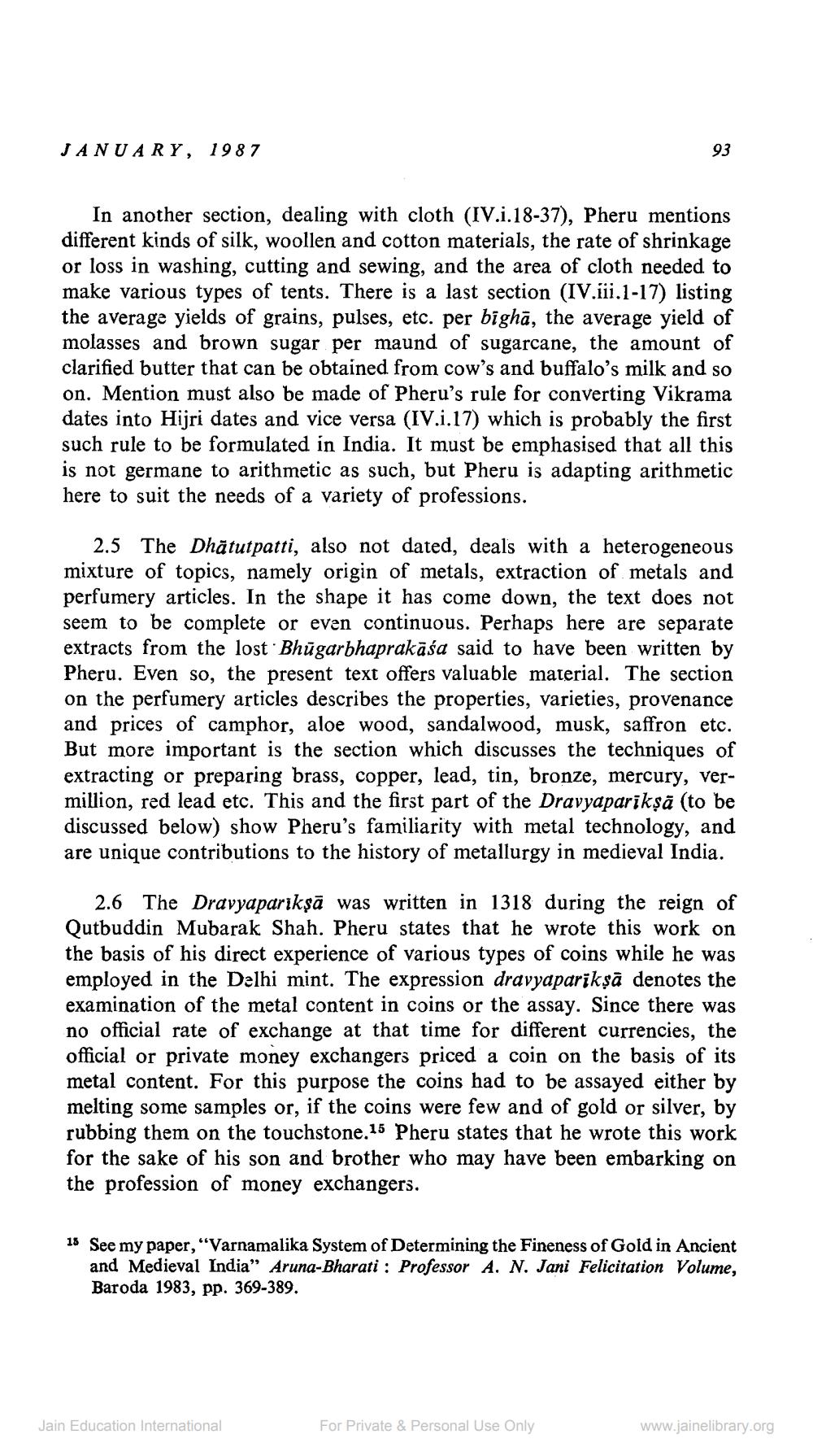________________
JANUARY, 1987
93
In another section, dealing with cloth (IV.i.18-37), Pheru mentions different kinds of silk, woollen and cotton materials, the rate of shrinkage or loss in washing, cutting and sewing, and the area of cloth needed to make various types of tents. There is a last section (IV.iii.1-17) listing the average yields of grains, pulses, etc. per bighā, the average yield of molasses and brown sugar per maund of sugarcane, the amount of clarified butter that can be obtained from cow's and buffalo's milk and so on. Mention must also be made of Pheru's rule for converting Vikrama dates into Hijri dates and vice versa (IV.i.17) which is probably the first such rule to be formulated in India. It must be emphasised that all this is not germane to arithmetic as such, but Pheru is adapting arithmetic here to suit the needs of a variety of professions.
2.5 The Dhātutpatti, also not dated, deals with a heterogeneous mixture of topics, namely origin of metals, extraction of metals and perfumery articles. In the shape it has come down, the text does not seem to be complete or even continuous. Perhaps here are separate extracts from the lost Bhūgarbhaprakāśa said to have been written by Pheru. Even so, the present text offers valuable material. The section on the perfumery articles describes the properties, varieties, provenance and prices of camphor, aloe wood, sandalwood, musk, saffron etc. But more important is the section which discusses the techniques of extracting or preparing brass, copper, lead, tin, bronze, mercury, vermillion, red lead etc. This and the first part of the Dravyaparīkşā (to be discussed below) show Pheru's familiarity with metal technology, and are unique contributions to the history of metallurgy in medieval India.
2.6 The Dravyapariksā was written in 1318 during the reign of Qutbuddin Mubarak Shah. Pheru states that he wrote this work on the basis of his direct experience of various types of coins while he was employed in the Delhi mint. The expression dravyaparikşā denotes the examination of the metal content in coins or the assay. Since there was no official rate of exchange at that time for different currencies, the official or private money exchangers priced a coin on the basis of its metal content. For this purpose the coins had to be assayed either by melting some samples or, if the coins were few and of gold or silver, by rubbing them on the touchstone.15 Pheru states that he wrote this work for the sake of his son and brother who may have been embarking on the profession of money exchangers.
18 See my paper, "Varnamalika System of Determining the Fineness of Gold in Ancient
and Medieval India" Aruna-Bharati : Professor A. N. Jani Felicitation Volume, Baroda 1983, pp. 369-389.
Jain Education International
For Private & Personal Use Only
www.jainelibrary.org




